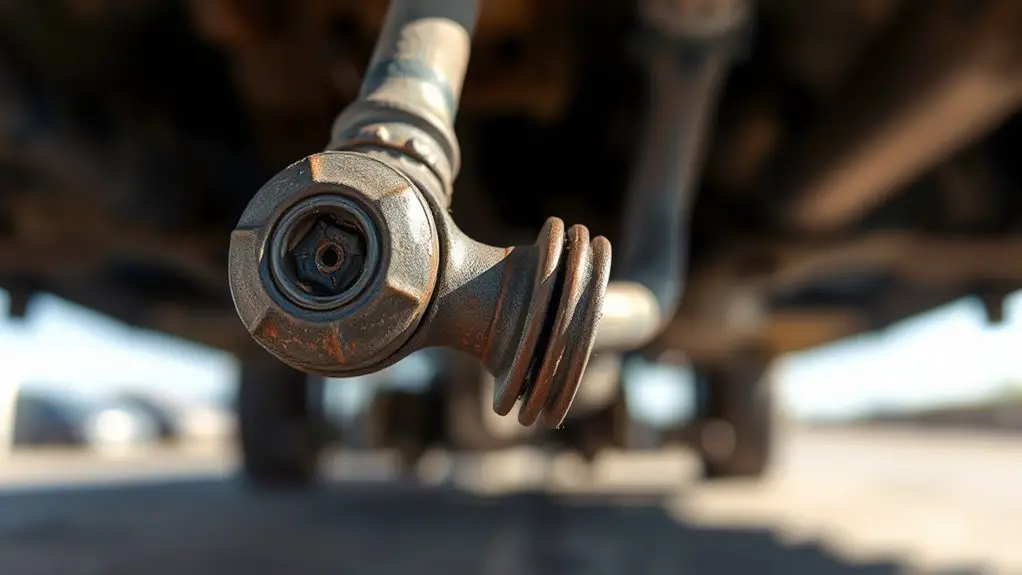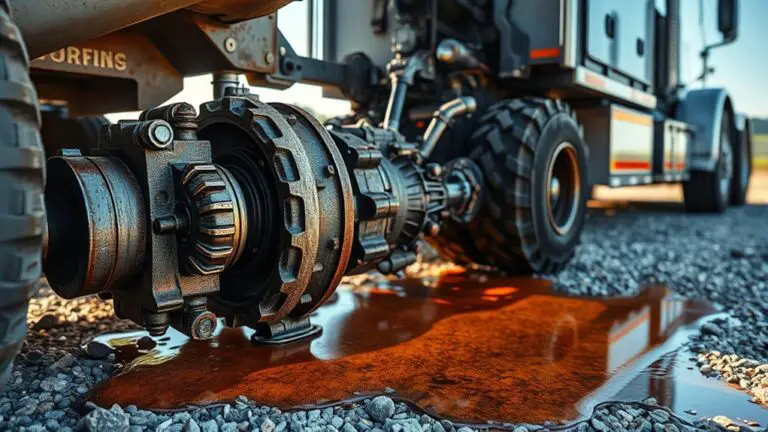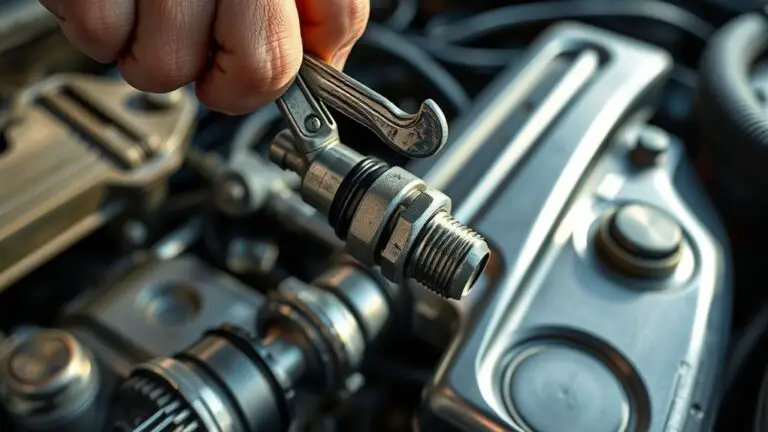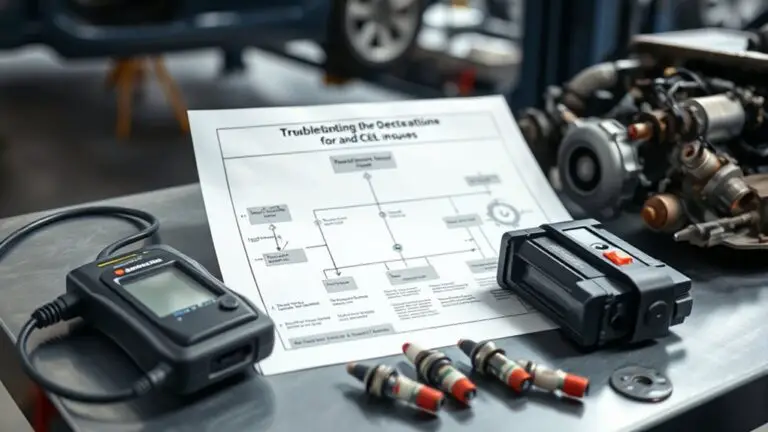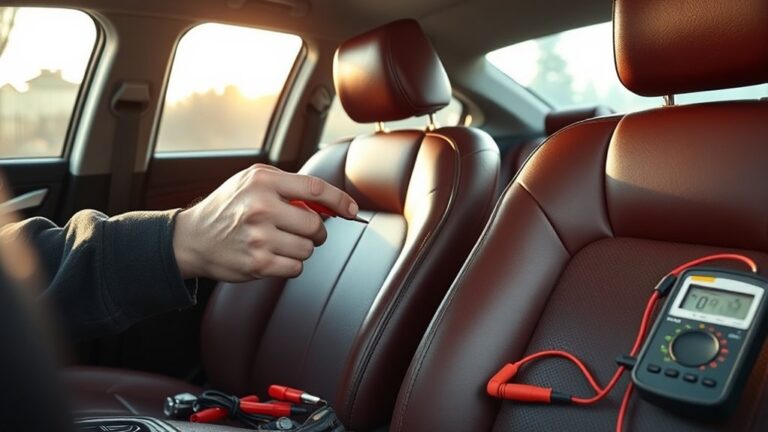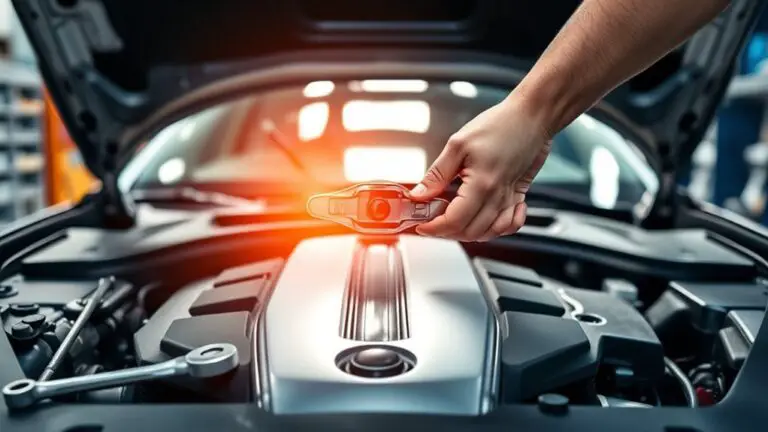When Worn Tie Rods Cause Major Safety Issues
Worn tie rods can undermine steering precision and load transfer,creating dangerous play, misalignment, and unpredictable handling that may lead to sudden loss of control. You’ll notice excessive steering play at low speeds, wandering, or crooked wheel stance after lane changes, plus clunks or pulling as you drive. This degrades tire contact, accelerates uneven wear, and can cause abrupt steering changes in bumps or turns. If this continues, your safety—and that of others—could be at risk; more details await.
What Are Tie Rods and How Do They Fail
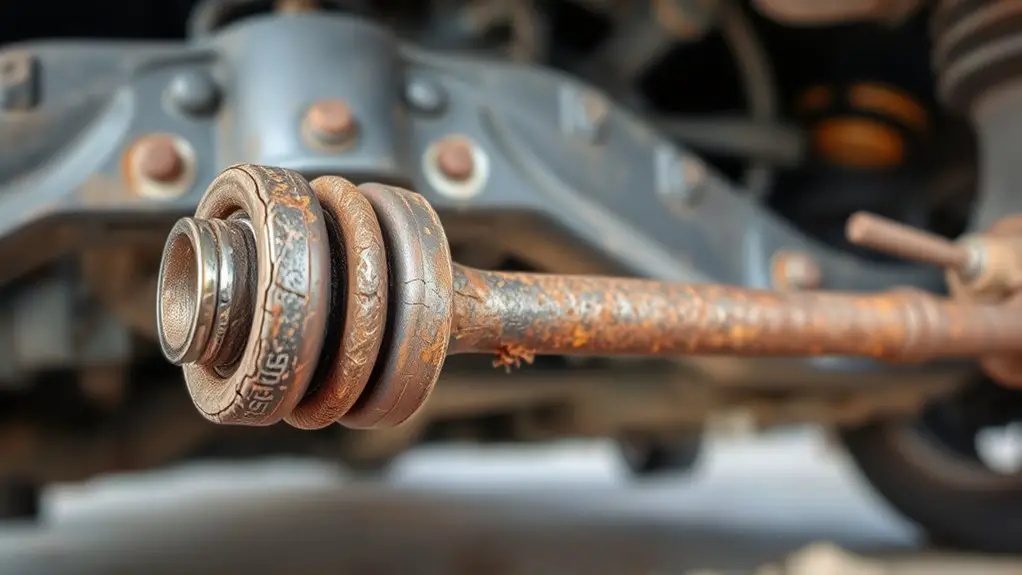
Tie rods are critical steering components that connect the steering knuckle to the steering rack, forming the mechanical link that translates rotation into wheel movement. You understand they transmit steering input from the driver to the wheels, controlling geometry and response. The primary tie rod functions include steering angle adjustment, alignment maintenance, and load transfer during dynamic maneuvers. When wear or impact occurs, play develops, alignment shifts, and steering feel becomes vague or inconsistent. Failures can manifest as excessive looseness, binding, or abrupt changes in direction, compromising precision and safety. Early signs include uneven tire wear, wandering, or off-center wheel position. Tie rod types vary by construction and application, such as threaded sleeve designs, rod-end ball joints, and non-adjustable units in certain architectures; each type has specific tolerances and service intervals. Proper inspection focuses on joint integrity, boots, and fastener security. You should monitor for grease leakage, rust, or corrosion, and replace components before performance degradation accelerates.
Causes of Tie Rod Wear and Tear
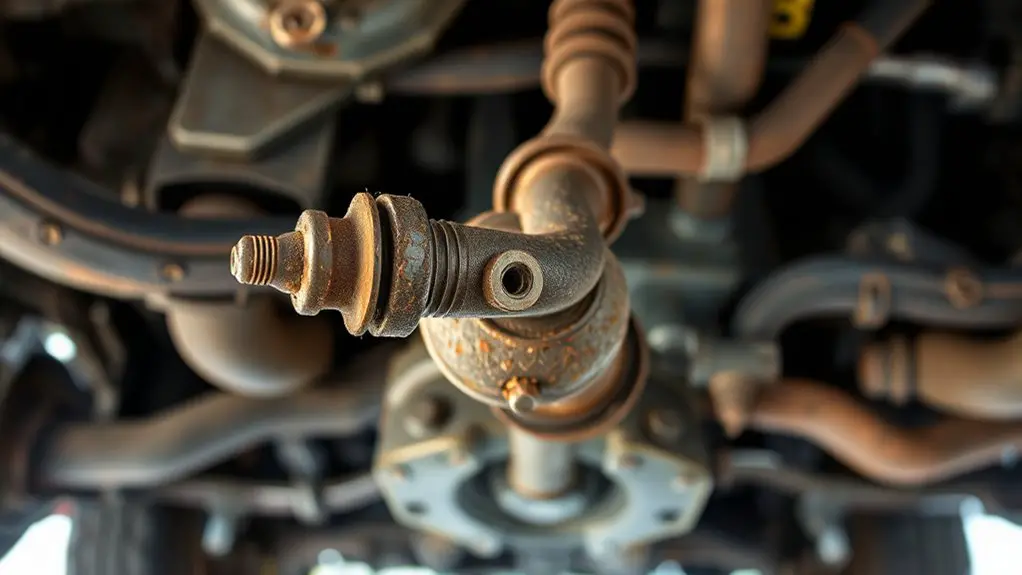
Wear and tear on tie rods arises from a combination of mechanical loading, exposure, and installation factors. In practice, you’ll see wear driven by cyclic loading, occasional oversteer, and torque fluctuations during steering input. The assembly’s materials and protective coatings determine resistance to environmental attack; corrosion accelerates when coatings crack or fasteners loosen. The main mechanism is galling, abrasion, and pitting at joint interfaces, amplified by misalignment and insufficient lubrication. Improper installation—under-torquing, over-torquing, or asymmetric mounting—induces uneven stress and early fatigue. Operational exposure—road salt, moisture, and temperature swings—facilitates rust, which widens clearances and promotes dynamic play in the linkage. Driving habits matter: aggressive maneuvers, frequent pothole contact, and heavy loads intensify cyclic stress and accelerates wear progression. You should monitor boot integrity and joint play, confirm proper alignment, and replace components with compatible materials to minimize fatigue life reductions. Addressing corrosion onset early preserves steering steadiness and safety margins.
Warning Signs You Should Not Ignore
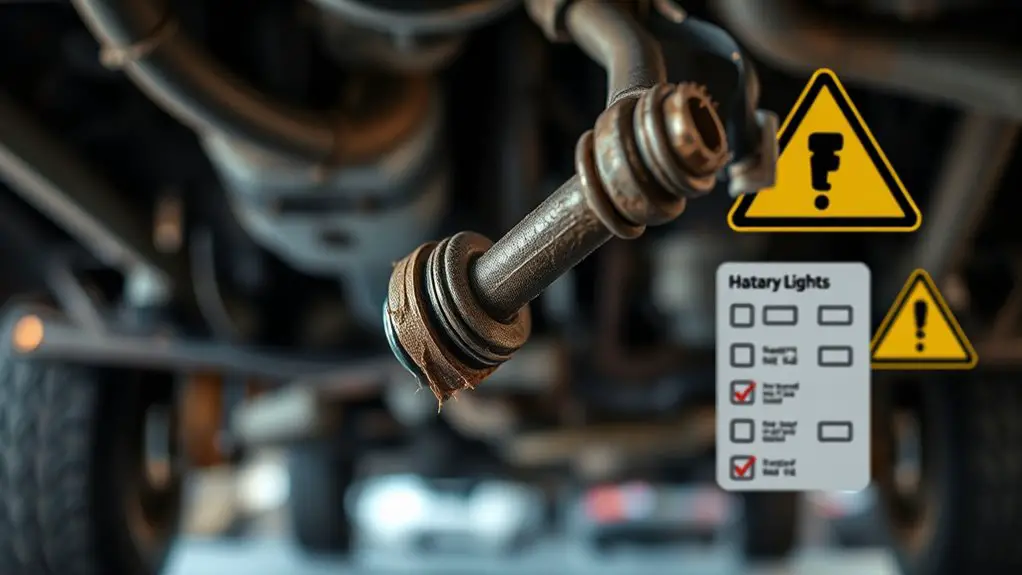
If you notice its symptoms early, you can prevent a minor issue from becoming a major safety risk. Worn tie rods manifest through distinct warning signs you should not ignore. Listen for excessive steering play at low speeds, unusual alignment drift, or a crooked wheel stance after a lane change. You may also feel a subtle pull or vibration when you straighten the wheel, signaling internal joint wear. Visual cues matter: looseness in the tie rod ends, torn boots, or grease leakage indicate degraded performance and rising safety concerns. Listen for clunks, pops, or knocking sounds during light bumps or turns, which point to joint looseness or end failure. Uneven tire wear can reflect improper geometry from worn components. If you detect any of these safety concerns, schedule inspection promptly. Early identification reduces repair cost and preserves control, steering feel, and predictable handling in critical driving scenarios.
How Worn Tie Rods Affect Steering Performance
Worn tie rods increase steering play, which you’ll notice as looser, less direct wheel input. Under load, you may feel vibration and binding, signaling degraded linkage and reduced road feedback. This condition also accelerates uneven tire wear, complicating handling and control.
Steering Play Increases
Misalignment and looseness in the steering linkage, driven by worn tie rods, directly increase steering play by reducing the system’s effective stiffness. You’ll notice a lag between wheel input and the actual turn, which erodes steering responsiveness and vehicle control. This mechanical slack allows tires to “settle” before the chassis responds, degrading precision at both low and high speeds. As stiffness drops, nonliner forces amplify play, complicating steering corrections and increasing trim variance. The result is unpredictable feedback, forcing you to compensate repeatedly. Table below interlocks observations with risk implications, guiding diagnostic focus.
| Column 1 | Column 2 | Column 3 |
|---|---|---|
| Slack increases | Feedback degrades | Control becomes uncertain |
| Alignment shifts | Geometry worsens | Steering effort rises |
| Tire contact fluctuates | Centering drifts | Correction demands grow |
| System stiffness falls | Predictability wanes | Safety margin narrows |
Vibration Under Load
Under load, vibrations become a direct indicator of degraded steering geometry driven by worn tie rods. You’ll notice rhythmic oscillations that align with wheel input, not random chatter. These vibrations stem from altered pivot points and uneven force transfer, revealing how tie-rod wear shifts toe and camber under load. Vibration causes energy to funnel through the steering column and chassis, reducing feedback fidelity and compounding driver uncertainty. You should link amplitude and frequency changes to specific wear states, distinguishing transient responses from persistent derangement. Load effects amplify any looseness, making steering feel heavier or more reactive at certain speeds. In diagnostic terms, correlate vibration patterns with braking, acceleration, and cornering to confirm worn tie rods as the root cause rather than isolated tire or suspension quirks. Precision inspection remains essential for safe remediation.
Uneven Tire Wear Effects
Uneven tire wear is a direct consequence of worn tie rods altering toe and caster at varying loads, causing the tire contact patch to shift inconsistently and degrade steering precision. You’ll notice subtle pulls, centerline drift, and increased effort when correcting direction. This wear pattern reflects compromised geometry, making tire pressure management and alignment checks critical to restoration. Precision remains possible only with proper toe-in reduction and caster stabilization, returning predictable response and safer steering. Here’s a mental sketch to visualize the effect:
| Outer edge wear | Inner edge wear |
|---|---|
| Uneven contact patch | Uneven grip distribution |
Take proactive steps: monitor tire pressure, perform alignment checks, and verify tie-rod integrity to regain steering fidelity.
Tire Wear and Alignment Consequences
When toe, camber, or caster are off, tire wear patterns become more pronounced and can indicate underlying alignment issues; these patterns, if left unchecked, can accelerate tread loss and reduce traction. You’ll notice uneven tread depth, cupping, or feathering that tracks with wheel position, not road surface alone. Misalignment alters load distribution across the contact patch, concentrating stress at tire shoulders and reducing overall grip during cornering, braking, and acceleration. Worn tie rods exacerbate these effects by allowing incremental toe drift under load, amplifying wear asymmetries and steering wobble. Maintaining proper tire pressure remains essential, as underinflation or overinflation magnifies wear imbalances and increases rolling resistance. Regular alignment checks help isolate whether tire wear stems from suspension components or tire health, guiding corrective actions before costly tires and compromised handling ensue. In practice, couple routine tire pressure monitoring with periodic alignment checks to sustain predictable steering response, even as precise dynamics demand consistency and freedom of movement.
Inspection and Diagnosis: Step-by-Step Guide
To begin the inspection, start with a systematic function check of the steering and suspension, focusing on how toe drift and play manifest under manual and road load. You’ll assess alignment reference points, steering effort, and return-to-center behavior, noting any asymmetry. Move to a tactile evaluation: grab the wheel at quarter and three-quarter positions, feel for binding or looseness, then test bump absorption over varied surfaces to reveal suspension-induced toe changes. Proceed with a tie rod inspection using diagnostic tools to measure endplay, steering rack movement, and joint preload. Scan for play beyond spec, torn boots, or displaced connectors, documenting magnitudes precisely. Employ straightedge and dial indicators where required to corroborate visual cues against vehicle rating sheets. Cross-check with manufacturer torque specs, ensuring fasteners and adjuster sleeves maintain proper preload. Conclude by correlating symptoms with data from diagnostic tools, distinguishing loose components from misalignment, and preparing a concise diagnostic report for repair planning.
Repair and Replacement Options
Repair and replacement options depend on the specific failure mode identified during inspection. You’ll choose paths based on measured play, corrosion extent, and joint condition, not guesswork. For repair techniques, consider threaded end rebuilds, spline sleeve repair, or stabilizing couplers when the rod itself remains salvageable. If fatigue or cracking dominates, replacement options are preferred to restore reliability and alignment. In some cases, you’ll replace only the tie rod ends with compatible, higher-grade components to preserve geometry while limiting downtime. When damage is localized, end machining and re-torquing procedures may suffice; otherwise, full assembly replacement guarantees consistent steering feel and safety margins. Always verify alignment after any repair or replacement. Table below highlights concise choices.
| Condition | Recommended Action |
|---|---|
| Local damage | Repair techniques |
| Fracture or wear | Replacement options |
| Corrosion bulk | Replacement options |
Preventive Maintenance to Extend Tie Rod Life
Inspect for wear under regular intervals to catch early degradation before it propagates. Establish clear PM timelines that align with vehicle usage and operating conditions, and document findings for trend analysis. By combining wear checks with scheduled maintenance, you create a proactive approach to extend tie rod life and maintain steering accuracy.
Inspect for Wear
Regular wear indicators should be checked routinely to prevent steering and handling issues. You perform a targeted tie rod inspection to identify play, misalignment, and compromised joints before they escalate. Begin with a visual scan for nicks, corrosion, and boot integrity, then verify end-to-end movement with controlled flex and load. If you feel any binding or excessive free play, mark it as suspect and proceed to a strategic wear assessment using measured tolerances from manufacturer specs. Document oddities such as uneven boot swelling or rod aperture wear, and isolate them from unrelated suspension components. Use precise torque checks on tie rod ends and adjust accordingly if specs diverge. Prioritize quick, data-backed decisions, preserving control while avoiding unnecessary component replacement.
Schedule PM Timelines
Setting a preventive maintenance schedule for tie rods requires concrete intervals tied to vehicle usage, environment, and manufacturer recommendations; this guarantees timely inspections, lubrication, and torque verification before wear trends impact steering performance.
You follow a disciplined cadence, aligning maintenance schedule with service intervals that minimize drift, play, and unsafe steering responses. Regular checks curb looseness, identify corrosion, and verify end fitting integrity. Record timings, monitor load conditions, and adjust intervals after dramatic duty cycles.
| Column A | Column B |
|---|---|
| Maintenance schedule | Service intervals |
| Inspect/grease | Torque verify/adjust |
| Fender-to-axle conflicts | Load and alignment review |
| Documentation | Predictive trend analysis |
Frequently Asked Questions
How Long Do Tie Rods Typically Last Under Extreme Driving Conditions?
Tie rods under extreme driving typically last about 20,000 to 50,000 miles, though you’ll see wide variation. You’ll notice play, steering looseness, or odd alignment drift well before failure. With aggressive driving, expect the lower end; in calmer use, the upper. Your driving habits and maintenance practices matter most: rotate tires, inspect joints, and keep alignment in check. If you push hard, plan sooner replacements; if you value freedom, monitor wear, act early, and drive smart.
Can Worn Tie Rods Affect ABS and Stability Control Systems?
Yes, worn tie rods can affect ABS and stability control. As tie rod symptoms progress, steering becomes imprecise, causing excessive wheel play that unsettles vehicle dynamics. This can trigger stability control to compensate or limit torque, potentially altering braking behavior. Misalignment also changes sensor inputs, confusing ABS calculations. You should inspect tie rods promptly; proactive maintenance preserves steering precision and prevents stability control from overreacting to marginal steering inputs.
Do OEM and Aftermarket Tie Rods Differ in Safety Outcomes?
OEM quality and aftermarket performance differ in safety outcomes, but both can meet or fall short depending on design and installation. You’ll get more consistent steering geometry and wear resistance with OEM parts, while aftermarket options vary widely and may degrade ABS or stability control if mismatched. Your safety hinges on proper fit, material grade, and torque specs. Use trusted brands, verify specs, and have accurate alignment for peak, freedom-loving driving control.
Is There a Risk of Steering Column Damage From Severe Tie Rod Wear?
Yes, severe tie rod wear can risk steering column damage because the excessive play shifts load and shocks through the steering system. You’ll notice degraded steering responsiveness and potential misalignment. If you ignore it, alignment problems worsen and steering effort may spike. Regular inspection helps catch wear early, preventing additional stress on the steering column components. If you observe looseness or vibration, replace worn tie rods to maintain precise control and preserve safety margins.
How Do Weather and Road Salt Accelerate Tie Rod Deterioration?
Around 60% of steering issues you notice in winter are tied to wear accelerated by weather impact and road salt. You’ll see corrosion form on joints and sleeves, while freezing cycles expand gaps that let tie rods flex abnormally. Road salt accelerates metal degradation and contaminant buildup in lubrication, increasing play. You must inspect rubber boots for tears, monitor steering effort, and clean channels after storms to minimize wear from weather impact and road salt.

